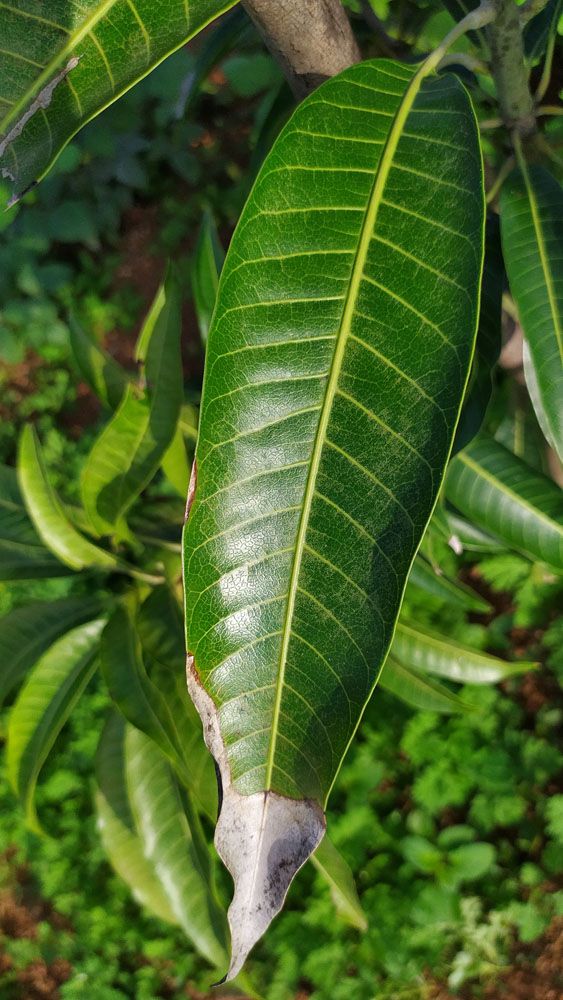
Salt Burn
Article 1- Salt burn
Leaf burn may impact a wide range of plants, especially during the warmest months of the year. Plant leaf burn is unsightly and inconvenient, but you can take some simple steps to avoid it.
What does salt Burn mean?
When salts in water build in the soil surrounding a plant’s roots, this is known as salt burn. The minerals, or salts, prevent the plant from adequately absorbing water, resulting in yellowed leaves and slower development. The margins of the leaves will begin to die if there is a lot of salt on them. This appears to be caused by alkaline or salty soil or water. Salt burn on plants commonly forms at the leaf’s tip and margins. By flooding (leaching) the salt out of the root zone, you may enhance the soil. Deep watering regularly is an excellent approach to avoid this.
Symptoms of damage:
Water and soil dissolved salts are easily absorbed by plant roots and transferred to the leaf edges, where they ‘burn’ the leaves. Salty soils make it difficult for plants to absorb water and nutrients, resulting in stunted development. On the leaf tips and edges, there is a yellowing that advances to brown, then black. Young plants can become stunted as a result of leaf loss and ‘die-back of developing tips. Plants suffering from salt damage will have thicker leaves than average, a deeper green color, and be stunted. Grasses are dark green with burnt edges.
Management Strategies for Mitigating Salt Injury:
This is the most common problem with spider plants. Salt toxicity, dryness, nutritional inadequacy, transplant shock, and soil compaction are all potential causes of leaf burn. In certain circumstances, the problem can be treated by pruning the afflicted parts and sprouts.
Reduce your salt intake: Combine salt with grittiness-inducing materials like sand, sawdust, or cinders to improve grip. Deicing products containing salts other than sodium chlorides, such as calcium chloride, magnesium chloride, potassium chloride, or calcium magnesium acetate (CMA), are more costly, but they can protect plants.
Make applications carefully: Because snow and ice melt can cause salt accumulation in the soil, avoid planting in locations where runoff occurs naturally. Walkways and highways, not garden beds or lawns, should be targeted for applications. Soils that have been excessively watered can be leached to remove salts from well-drained soils. With poorly draining soils, this is impossible. Adding organic matter to poorly drained soils can help to enhance drainage.
Protect plants with the physical: Choose salt-tolerant plants, but keep in mind that this does not guarantee they are injury-free. Tolerance varies according to the method of salt exposure (spray vs. soil). When selecting “salt-tolerant” plants, keep in mind that the degree of patience and level of damage depends on various conditions, with tolerance varied even within the same species. Differences in plant response between places can be caused by soil type and climatic fluctuation. Physical barriers, such as burlap, plastic, or wood, can be used to protect plants.
Article 2- Salt Damage on Lawn: How to Treat Salt Damage on Your Lawns
When salt builds up to dangerous amounts in the soil, it causes harm. This can occur for a variety of reasons: the grass does not receive enough water from rain or irrigation to remove the salts from the soil. It also happens when the drainage is so bad that water does not travel through the soil. Salts dissolved in the water collect near the soil surface under these situations. The salt draws moisture from the grass, which causes it to turn brown. Salts might come from the soil, irrigation water, or fertilizers that have been applied. Excess salts can also cause salt damage, such as overfertilizing or polluting the soil with saltwater. Deicing salts can be sprayed or spilled onto lawns in cold-weather locations from highways and sidewalks. The grass near the road turns yellow and dies the next spring, causing damage.Sings and Damaged
When plants are exposed to salt, the needles become brown from the tip to the root. Trees and shrubs may be harmed, although this may not be apparent until the following spring when plants fail to leaf out or bud simply due to bud damage. If rain or snowmelt does not dilute the salt, the soil becomes very salty and can harm plants. To protect your plants from salt damage, slope your pathways and roads so that they drain away from your plants. In the spring, thoroughly rinse all plants that have been exposed to saltwater. Although reversing salt damage is extremely difficult, you may do your best to avoid it by using anything other than salt.How to Prevent Salt Damage
- Spreading the snow lowers salt content, reduces soil compaction, speeds up melting, and improves the appearance of your property.
- When you shovel your driveway or pathways quickly, the snow has less time to develop into ice, lowering the quantity of salt required to keep your driveway clean and clear.
- If you have plants growing near a roadway, try placing a burlap cloth barrier to avoid salt from entering into the plant beds. These barriers might help protect your grass this winter by reducing salt spray.
